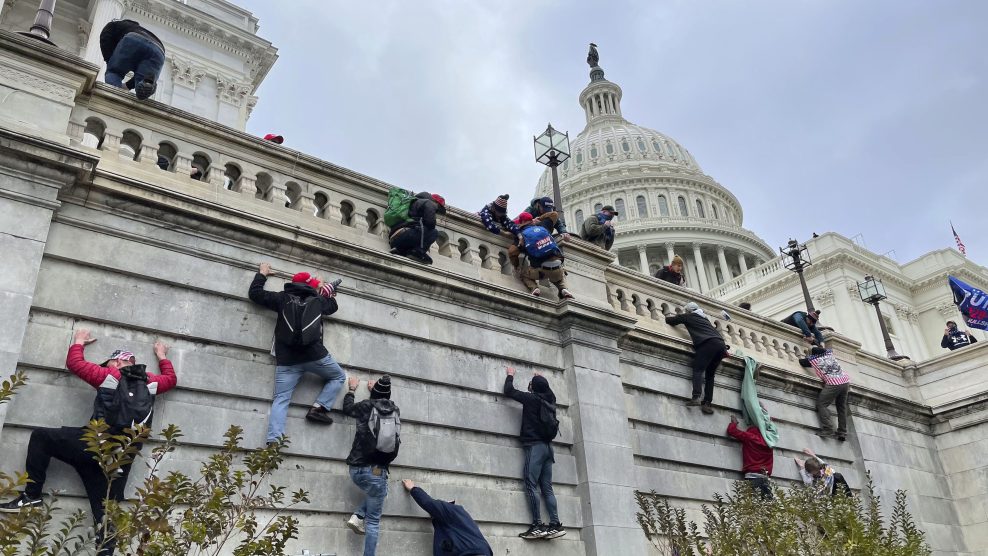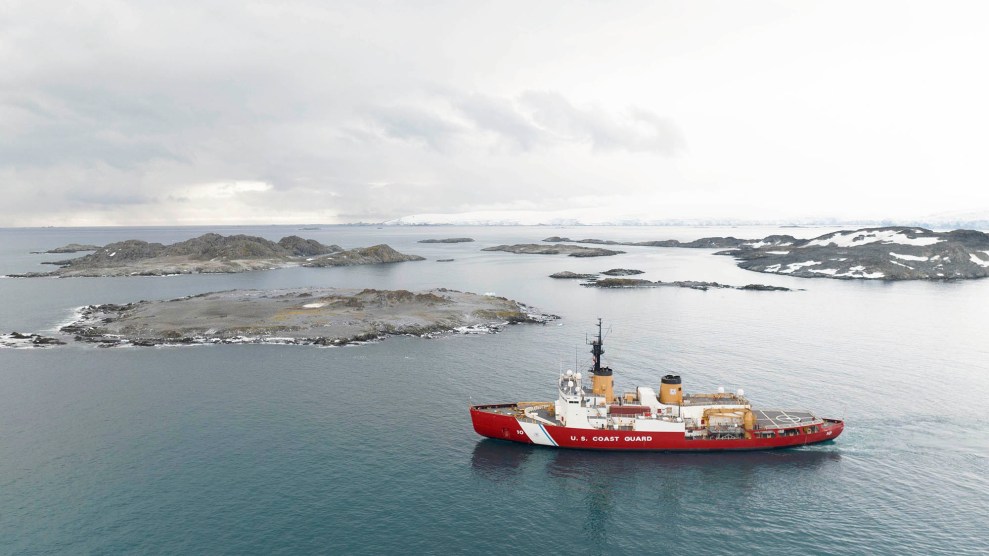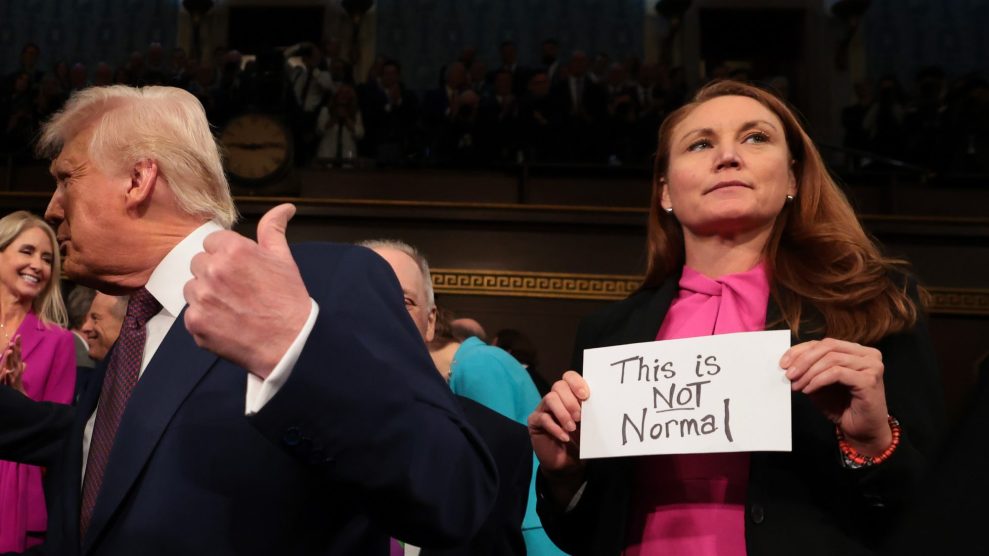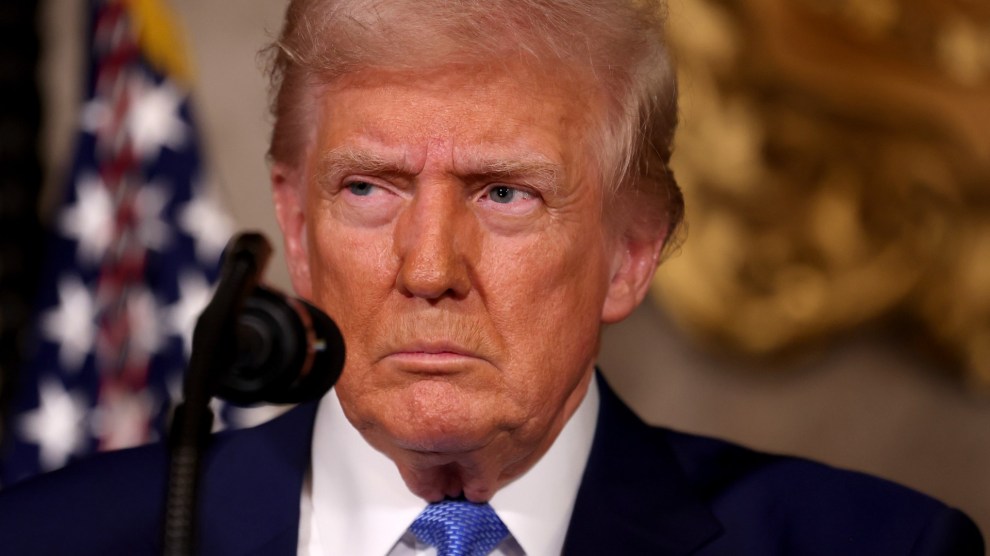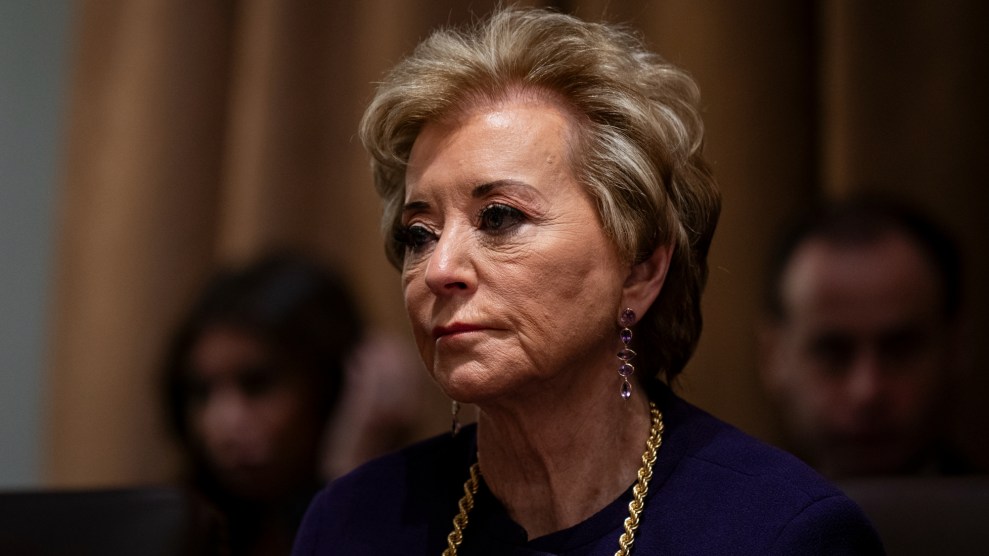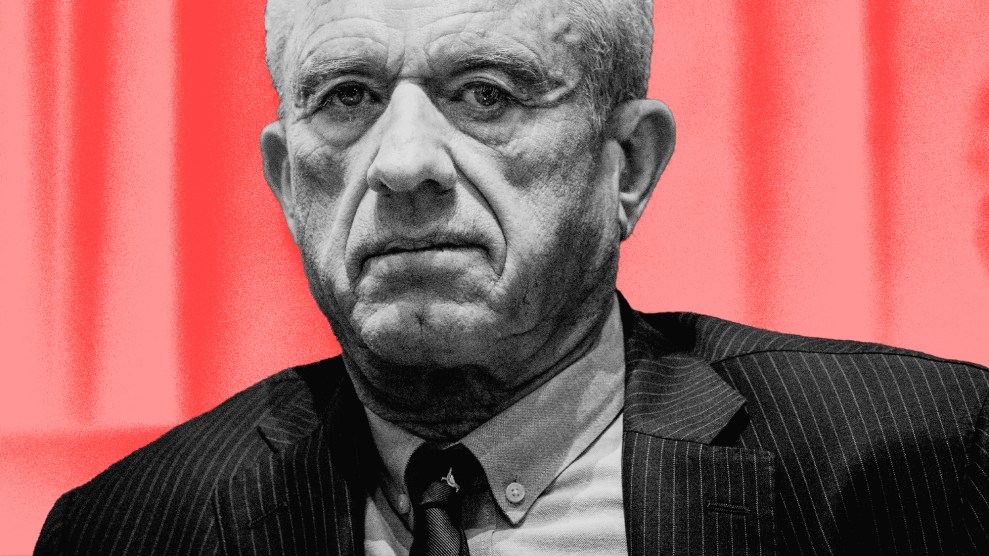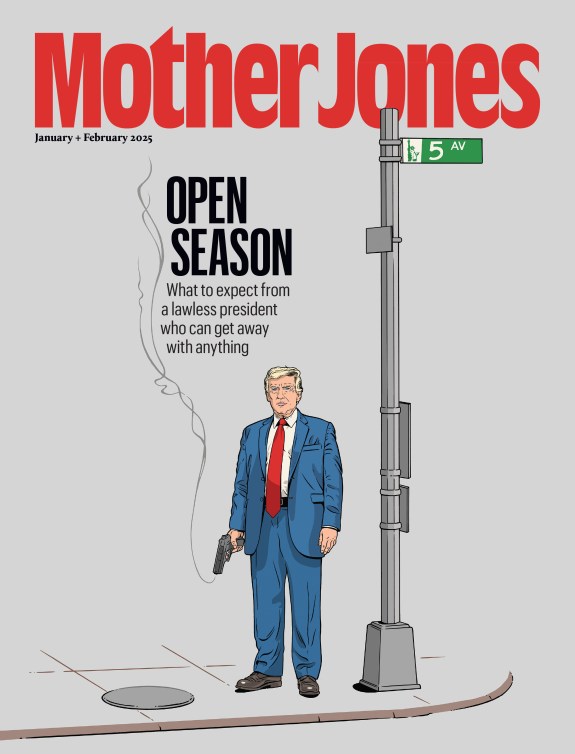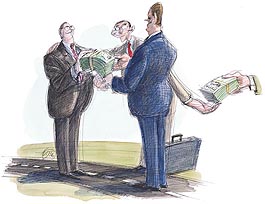
Illustrations: Victor Juhasz
“the road is one succession of dust, ruts, pits, and holes.” So wrote Dwight D. Eisenhower, then a young lieutenant colonel, in November 1919, after heading out on a cross-country trip with a convoy of Army vehicles in order to test the viability of the nation’s highways in case of a military emergency. To this description of one major road across the west, Eisenhower added reports of impassable mud, unstable sand, and wooden bridges that cracked beneath the weight of the trucks. In Illinois, the convoy “started on dirt roads, and practically no more pavement was encountered until reaching California.”
It took 62 days for the trucks to make the trip from Washington, D.C., to San Francisco, and another 37 years for Ike to complete a quest, inspired by this youthful journey and by his World War II observations of Germany’s autobahns, to build a national road system for the United States. In 1956, President Eisenhower signed the Federal-Aid Highway Act, which called for the federal and state governments to build 41,000 miles of high-quality roads across the nation, over rivers and gorges, swamps and deserts, over and through vast mountain ranges, in what would later be called the “greatest public works project in human history.” So vital to the public interest did Eisenhower, an old-style fiscal conservative, consider the interstate highway system, he even authorized the federal government to assume 90 percent of the massive cost.
Fifty years to the day after Ike put his pen to the Highway Act, another Republican signed off on another historic highway project. On June 29, 2006, Mitch Daniels, the former Bush administration official turned governor of Indiana, was greeted with a round of applause as he stepped into a conference room packed with reporters and state lawmakers. The last of eight wire transfers had landed in the state’s account, making it official: Indiana had received $3.8 billion from a foreign consortium made up of the Spanish construction firm Cintra and the Macquarie Infrastructure Group (mig) of Australia, and in exchange the state would hand over operation of the 157-mile Indiana Toll Road for the next 75 years. The arrangement would yield hundreds of millions of dollars in tax breaks for the consortium, which also received immunity from most local and state taxes in its contract with Indiana. And, of course, the consortium would collect all the tolls, which it was allowed to raise to levels far beyond what Hoosiers had been used to. By one calculation, the Toll Road would generate more than $11 billion over the 75-year life of the contract, a nice return on mig-Cintra’s $3.8 billion investment.
The deal to privatize the Toll Road had been almost a year in the making. Proponents celebrated it as a no-pain, all-gain way to off-load maintenance expenses and mobilize new highway-building funds without raising taxes. Opponents lambasted it as a major turn toward handing the nation’s common property over to private firms, and at fire-sale prices to boot.
The one thing everyone agreed on was that the Indiana deal was just a prelude to a host of such efforts to come. Across the nation, there is now talk of privatizing everything from the New York Thruway to the Ohio, Pennsylvania, and New Jersey turnpikes, as well as of inviting the private sector to build and operate highways and bridges from Alabama to Alaska. More than 20 states have enacted legislation allowing public-private partnerships, or P3s, to run highways. Robert Poole, the founder of the libertarian Reason Foundation and a longtime privatization advocate, estimates that some $25 billion in public-private highway deals are in the works—a remarkable figure given that as of 1991, the total cost of the interstate highway system was estimated at $128.9 billion.
On the same day the Indiana Toll Road deal closed, another Australian toll road operator, Transurban, paid more than half a billion dollars for a 99-year lease on Virginia’s Pocahontas Parkway, and the Texas Transportation Commission green-lighted a $1.3 billion bid by Cintra and construction behemoth Zachry Construction to build and operate a 40-mile toll road out of Austin. Many similar deals are now on the horizon, and mig and Cintra are often part of them. So is Goldman Sachs, the huge Wall Street firm that has played a remarkable role advising states on how to structure privatization deals—even while positioning itself to invest in the toll road market.
Goldman Sachs’ role has not been lost on skeptics, who accuse the firm of playing both sides of the fence. “In essence, they’re double-dipping,” says Todd Spencer, executive vice president of the Owner-Operator Independent Drivers Association, a truckers’ group that opposes toll road privatization. “They’re basically in the middle, playing one side against the other, and it’s really, really lucrative.”
Despite such concerns, the privatization model has the full backing of the Bush administration. Tyler Duvall, the U.S. Department of Transportation’s assistant secretary for transportation policy, says dot has raised the idea with “almost every state” government and is working on sample legislation that states can use for such projects. “This is a ground battle in the United States right now,” he says. “States just need to be convinced that this is basically something they should be considering.”
The financial stakes are potentially huge. “You’re buying the infrastructure of the economy, and it’s enormously valuable,” says John Schmidt, who served as associate attorney general in the Clinton administration and as counsel to the city of Chicago on the $1.8 billion privatization of the Chicago Skyway, the 7.8-mile freeway that connects the Dan Ryan Expressway in the west to the Indiana Toll Road in the east. “[Private road operators] haven’t been able to get in here previously. There’s been a demand, and it’s been bottled up because we just haven’t had privatized infrastructure in this country, so they’ve been buying toll roads in Chile and in France. Now, they suddenly have the opportunity to come into this country.”
at the western end of the Indiana Toll Road, just over the Illinois border, the scenery rolls by like the lyrics to a particularly forlorn Bruce Springsteen song. Passing over Wolf Lake, infamous in these parts as the site where “thrill killers” Nathan Leopold and Richard Loeb dumped the body of 14-year-old Bobby Franks in the 1920s, the highway skirts ghost factories and decaying main streets until, outside Gary, the smokestacks give way to cornfields and Christmas tree farms, and the scenery stays pastoral across the length of northern Indiana. If you’ve ever traveled cross-country on I-90, known here as the “main street of the Midwest,” you’ve driven the Toll Road.
Privatizing this 157-mile interstate artery was the brainchild of Indiana governor Mitch Daniels, a former Eli Lilly executive and the director of the White House Office of Management and Budget between 2001 and 2003—a position in which he was known, for his budget-cutting fervor, as “The Blade.” Daniels, by all accounts, began plotting the privatization of the Indiana Toll Road soon after he took office in January 2005. The new governor was inspired by Chicago’s $1.8 billion Skyway deal but had something far bigger in mind. Leasing out the Toll Road would be the centerpiece of his transportation plan, “Major Moves,” a name—borrowed from a Hank Williams Jr. album—that Daniels said he came up with while singing in the shower. Under the plan, Indiana will spend nearly $12 billion over the next decade on highway construction projects funded, in part, by the proceeds from the Toll Road lease.
By September 2005, the governor was soliciting bids for the project, with Goldman Sachs serving as the state’s financial adviser—a role that would net the bank a $20 million advisory fee. The winning company would maintain and improve the highway, with the lease agreement spelling out its responsibilities down to the maximum time allowed for clearing roadkill. In return, the company would collect tolls, which it would be allowed to raise by a specified percentage each year after 2010. The deal (including the 75-year term chosen for the lease) was structured so the companies would gain a huge tax advantage; to further sweeten the pot, the state instituted the first toll increase in 20 years shortly before the agreement went through, nearly doubling the rate for passenger cars and gradually raising truck tolls 120 percent. (The toll for cars was promptly frozen pending the installation of electronic tolling, sometime before mid-2008; in the meantime, the state is paying mig-Cintra the difference.)
Driving the Toll Road on a temperate late-summer morning, the sun squinting through a thick covering of stratus clouds, it was hard to find anyone who approved of Daniels’ deal. “Our economy’s already bad,” said Amber Kruk, an 18-year-old starting her shift at a Perkins just off the highway in South Bend. “We don’t understand why we’re giving this road to a foreign company.” Gassing up his flatbed at a service station off the Toll Road, 62-year-old trucker Richard DeRohan said he runs the road less now because of the increased tolls. “It should have stayed in state hands,” he said. “I didn’t like when they did it in Chicago. It should be run by a public entity—they’re the ones who created it.”
In a New York Times op-ed published in May, not long after Indiana’s state Legislature approved the Toll Road deal, Daniels acknowledged that public sentiment had run almost 2-to-1 against the idea, and then summarily dismissed the opposition: “Their hearts were in the right place, but not their logic.” Indiana, he argued, “very nearly tore up its equivalent of a Powerball check” as Hoosiers convinced themselves “either that our proposal borrowed from the future, or that it gave away a part of America to ‘foreigners.'”
In fact, Daniels argued in a paper he wrote for the Reason Foundation last spring, “any businessperson will recognize our decision here as the freeing of trapped value from an underperforming asset, to be redeployed into a better use with higher returns.” Yet his administration failed to commission an independent financial analysis of the Toll Road project until the deal was almost done—and when it did, internal emails obtained by Mother Jones show, the motivation was primarily political. “Current criticism from opposition is ‘no independent analysis’ and Scott and his team have kindly volunteered to fill this void,” one high-level state official wrote in a February 2006 email, referring to Scott Nickerson, an executive at the accounting firm Crowe Chizek, which conducted the analysis.
The emails suggest that Daniels’ administration remained preoccupied with how to deploy the analysis to best political advantage—for example, by releasing it through a third party, such as a think tank. “The Governor is of the opinion that in order for our response to be politically independent, he would prefer that Crowe not be formally engaged to do this work,” one email states (emphasis in original). According to another, “Upon further discussion, the group decided that it would be beneficial to be engaged by a separate entity to allow us to perform the consulting project and avoid the appearance of a lack of objective, independent examination.”
In the end, the “independent” analysis, released just days before legislators were set to vote on Daniels’ plan, found exactly what the state had been arguing all along—that the private-sector bid far surpassed what the state stood to earn on its own. Near midnight on the final day of the legislative session, after contentious debate, the bill squeaked through the House in a 51 to 48 party-line vote.
Not everyone bought Crowe Chizek’s conclusions, though. Roger Skurski, a professor emeritus of economics at Notre Dame, analyzed the deal extensively on behalf of an Indiana law firm that brought suit to block the transaction. (The lawsuit ultimately failed.) It was Skurski who found that the value of the road, over a 75-year term, could be as much as $11.38 billion; in a letter to Rep. Thomas Petri, the Wisconsin Republican who chaired the U.S. House Subcommittee on Highways, Transit, and Pipelines, the economist wrote that “based on the State of Indiana’s own studies and figures…it seems that the conclusion changes from ‘deal’ to ‘no deal.'”
“The public was ignored on this; public opinion was ignored on this,” says Dave Menzer, an organizer at Citizens Action Coalition, an Indianapolis-based advocacy group that also joined the anti-privatization suit. “I think that increasingly the public feels like what’s driving politics, what’s driving these decisions, is multinational corporations and deal-makers like Goldman Sachs, Merrill Lynch, and Morgan Stanley. They’re the ones making tens of millions of dollars ultimately at the public’s expense.”
Shortly after the coalition launched its campaign to stop the deal, Menzer says, its six phone lines lit up with callers from around the country seeking to help pay for the lawsuit. In less than a month, it had helped raise nearly $120,000 toward the legal bills. “We saw so many different interests coming together saying that they didn’t like this,” he says. There were libertarians and Republicans, who felt the state was giving away too much for too little; long-haul truckers, who viewed the deal as the first stage of a national trend that could threaten their livelihoods; and environmentalists, who in the fine print of Daniels’ “Major Moves” plan had noticed an effort to revive (and possibly privatize) a long-stalled project to construct Interstate 69, the so-called nafta highway, through the farmlands of southern Indiana.
So why did Daniels insist on pushing the project through in the face of so much opposition? Daniels’ office turned down Mother Jones’ requests for an interview, but quite a few Hoosiers have come to believe that the governor could have been taking his cue from Washington. In this scenario, Indiana, a bellwether state in many ways, would serve as a test case. “Working to make Indiana one of the first states to pave the way for road privatization, to make a bad pun, was definitely his motivation,” Menzer says.
in mid-September, as the 61st United Nations General Assembly convened in New York, the Waldorf Astoria’s dim, ornate lobby was teeming with diplomats and dignitaries who sat huddled in armchairs, conferring in a multitude of languages. Rumor had it that President Bush himself had dropped by the hotel the night before.
Down the hall, in the chandeliered entryway that leads to the Waldorf’s Park Avenue entrance, 300 sharply dressed men and women were carrying on a different sort of diplomacy. These delegates, as they referred to themselves, were representatives from white-shoe investment banks and consultancies; high-powered lawyers; executives from the world’s leading infrastructure companies; and, sprinkled here and there, federal and state officials, who never seemed to go long without being pulled into a conversation and handed a business card. They were at the Waldorf for North American ppp 2006—a conference dedicated entirely to infrastructure privatization in the United States.
As the conference opened, on the morning of September 19, Tom Nelthorpe, the editor of the trade magazine Project Finance, addressed the audience, drawing a laugh when he joked about pirates “plundering the resources of the New World.” “I hope you’ll find today’s varied program evidence of a more sophisticated approach,” he said.
Emerging markets rarely emerge solely on their own, and would-be road operators have spent years working to convince state and local officials that privatization is a no-lose proposition. It has created something of an echo-chamber effect, says John Foote, a senior fellow at Harvard’s Kennedy School of Government who specializes in transportation issues. “If you’ve got enough people whispering in the ears of governors and mayors and so forth saying that this is the greatest thing since sliced bread and don’t miss the boat, pretty soon people start believing it.”
Perhaps the most tireless of the privatization advocates is Mark Florian, the chief operating officer of Goldman Sachs’ municipal finance division, who advised Chicago and Indiana on their toll road deals and says he has personally visited more than 35 statehouses to “help spur the market.” Florian was a speaker at the Waldorf conference, and after his remarks in the hotel’s lavish ballroom, the Goldman Sachs executive—who bears a mild resemblance to Stephen Colbert—was instantly mobbed, rock star style, by delegates, all of whom seemed to be on a first-name basis with him.
“I at times tell my colleagues that I kind of feel like a missionary—out trying to sell the religion,” Florian told Mother Jones. “We have been heavily invested in this.”
Florian’s employer isn’t just any old Wall Street firm. It is one of the nation’s most active and most profitable investment banks, and top Goldman Sachs officials have served in numerous administrations. Last summer, President Bush tapped its ceo, Henry “Hank” Paulson, as secretary of the treasury. Another former Goldman Sachs ceo is New Jersey governor Jon Corzine, who in September commissioned an analysis of whether state assets, including the New Jersey Turnpike, should be turned over to private companies. In addition to advising Indiana on the Toll Road deal, Goldman Sachs has worked with Texas governor Rick Perry’s administration on privatization projects, and according to Schmidt, the former adviser to the Chicago mayor’s office, it was a Goldman Sachs representative who first pitched the city on the idea of leasing out the Skyway.
That deal, which yielded $9 million in fees for Goldman Sachs, was “an eye-opener” for the company, Florian recalls: “That was a pretty phenomenal transaction. As soon as we were involved in that and saw the potential application of doing this more broadly, we were very excited about doing that.” After the Skyway lease closed, Florian says, Goldman Sachs was inundated with calls from investors worldwide who wanted a piece of America’s transportation infrastructure. “We said, ‘Well, gee, if all these people are interested in investing, perhaps we can create a vehicle for them to invest through,'” he explains. To that end, Goldman Sachs put together an infrastructure fund that, by the time Florian addressed the conference, had already surpassed its original $3 billion target. Other investment firms, including Morgan Stanley and the Carlyle Group, began putting together their own funds. So appealing is the infrastructure market that Goldman Sachs has made significant changes to its municipal finance group to better position itself for a coming boom.
When Goldman Sachs began advising Indiana on selling its toll road, it failed to mention to the state that it was putting together a fund whose sole purpose would be to pick up infrastructure for the best price possible in order to maximize returns for its investors. Nor did the bank advertise the fact that, even as it was advising Indiana on how to get the best return, its Australian subsidiary’s mutual funds were ratcheting up their positions in mig—becoming de facto investors in the deal.
“The firm is an established adviser, but we also have this big investment arm,” Florian told Mother Jones, arguing that Goldman Sachs’ dual nature typically doesn’t cause a problem in corporate deals. “But this is a trickier marketplace, and people are cognizant of that because it is so public. It’s so new…. We’re going to really feel our way along here.” A Goldman Sachs spokesman later contacted Mother Jones to stress that there is “a wall” between the firm’s investment and advisory divisions. “Asset management makes its investment decisions independently of the rest of the firm,” he said. Asked whether the firm has a system to prevent conflicts of interest, the spokesman demurred.
Florian says Goldman Sachs does have a system for avoiding conflicts in situations when Goldman is a principal investor in a deal. “We put in a voice mail and some information about that situation and what our role might be, and it literally goes around the world…. It’s a good system, but it’s not always perfect.” Indeed, the system didn’t stop Goldman Sachs last spring from vying to advise the city of Chicago on a deal to privatize Midway airport—even as it was seeking, along with other partners, to take over British Airports Authority, one of the companies likely to bid on the airport.
“One of the things we’ve learned in these recent corporate scandals is that those firewalls may not be very soundproof,” says Duane Windsor, a professor of business management at Rice University and an expert on business ethics. “There is a lot of leakage back and forth…that kind of problem where the motives are so mixed that it’s hard to tell why you are getting a certain piece of advice.
“There’s no reason to think the people in these companies are abnormally honest,” he adds wryly.
Dennis Enright, a principal at NW Financial Group, a New Jersey-based investment banking firm that advises municipal governments, says that in transactions involving vital public assets, investment banks such as Goldman Sachs should be carefully watched. “It does seem odd that they are effectively teeing up assets for their corporate clients to buy,” he says. “In most situations, that wouldn’t be deemed ethical.” John Foote, the Kennedy School fellow, also suggests that Goldman Sachs has “some decisions to make. People don’t want them playing on both sides of the fence.”
So, we asked Florian, does Goldman Sachs want to be an adviser or an investor in the business of roads? “Both,” he replied.
since its emergence as a major political issue in the Reagan era, privatization has become a default option for politicians of both parties aiming to off-load everything from prisons and welfare offices to Social Security. The movement has spawned its own industry of contractors, consultants, think tanks (with the Reason Foundation in the lead), and lobbyists; as a result, private companies now do everything from feeding soldiers in Iraq to taking welfare applications and even operating entire city halls for towns such as Sandy Springs, Georgia, a city of 85,000 that has outsourced its public works, administration, and finance to the Colorado-based firm ch2m hill. But the brass ring has long been seen to be the nation’s enormous, and aging, infrastructure.
Roads, in particular, are ripe for the picking. Congestion is increasing, and the Federal Highway Administration estimates that it will cost $50 billion a year above current levels of federal, state, and local highway funding to rehab existing bridges and roads over the next 16 years. Where to get that money, without raising taxes? Privatization promises a quick fix—and a way to outsource difficult decisions, like raising tolls, to entities that don’t have to worry about getting reelected.
More often than not, those entities are foreign—primarily because, unlike U.S. firms, foreign companies have years of experience operating private toll roads in South America, Europe, and Australia. One of the biggest among them is mig, a $6 billion subsidiary of Macquarie Bank Ltd. The company operates roads in the United Kingdom, Canada, and Germany, among other countries, but, as ceo Stephen Allen told the Australian TV show Business Sunday in 2005, “The attractive market to us is the U.S…. We’re well positioned in what we think could be a huge market.” The company’s annual report offers an upbeat illustration of mig‘s business: a picture of a sad-faced terrier alone in a living room at 6:10 p.m. (“Before”); a picture of the same terrier with attractive couple, in the same living room, same time (“After”). “Our motorways deliver people to places faster than if they used the often heavily congested, slower alternative routes,” the copy notes.
mig once owned 40 percent of Cintra (Concesiones de Infraestructuras de Transporte, S.A.), a Spanish company whose holdings include 21 roads across Europe and the Americas. Cintra’s 2005 annual report describes the company as “one of the world’s leading private transportation infrastructure developers,” and reassures investors that it offers the magical combination of high profits and “a low risk profile.” Investors in toll roads face stable revenues as well as expenses—and, best of all, “limited competition.”
Indeed, private road operators often insist on noncompete clauses that limit governments from expanding nearby roads. In 2003, Orange County bought back the lease for a set of pay-to-drive express lanes in the median of Route 91, just so it could finally expand the adjacent road. Toll road companies can even get governments to do their enforcement for them: In July 2004, the consortium that owns Toronto’s 407 etr, a 67-mile highway that relies on transponders and cameras to collect tolls, sued the provincial government to force it to deny license plate renewals to motorists who hadn’t paid their tolls. In the end, the consortium, which included mig and Cintra, was successful.
Over the past few years, the federal government has rolled out the welcome mat for private road companies. The 2005 highway bill changed the tax code to allow private firms to raise tax-exempt financing for road projects, something that only governments were able to do up to now. (For congressional pork buffs, this was the same legislation that contained Alaska Republican congressman Don Young’s “bridge to nowhere,” and that, by way of homage to Young’s wife, Lu, was named the Safe, Accountable, Flexible, Efficient Transportation Equity Act—A Legacy for Users, a.k.a. safetea-lu.) The bill also expanded eligibility for a transportation subsidy program that includes loan guarantees and lines of credit, and created a pilot program that lets participating states use tolling to finance interstate highway construction and invite private-sector participation on the projects. “It’s a very, very sweet deal,” says a veteran congressional transportation committee staffer who requested anonymity because of his role advising members on highway policy.
one morning last May, Congress took up the issue of highway privatization in a hearing of the House Subcommittee on Highways, Transit, and Pipelines. In attendance were D.J. Gribbin, a former chief counsel to the Federal Highway Administration who went to work as a lobbyist for Macquarie early last year; Goldman Sachs’ Mark Florian; and Governor Mitch Daniels, who was then a little more than a month away from sealing his historic deal with Cintra and mig.
Referring to Indiana’s decision to privatize its toll road, Daniels told the committee that so far, no one in government has come up with a workable solution to patch the gap between transportation needs and available funding. “All across our state, hundreds of road and bridge projects have been promised for years, in some cases decades, with no source of funding and no hope of becoming reality unless bold new steps are taken…. We looked at every option to address this funding shortfall, from raising the state gas tax [to] issuing more debt, increasing heavy truck fees, and increasing vehicle registration fees, to name just a few. It was clear that very few of these 200-plus projects would become reality on a business-as-usual basis.”
He later remarked, “Just as many business units are more valuable if separated from their conglomerate parent, an asset like a highway can be worth vastly more under different management.”
The hearing was a fairly docile affair—that is, until Oregon’s Peter DeFazio, the ranking Democrat on the subcommittee, got his turn questioning Daniels. “So you’re saying that there’s no political will to raise the tolls,” he began, “but if you enter into a binding contract which gives a private entity the right to infinitely raise tolls, then that’ll happen—but politically you couldn’t say we’re going to go out and raise the tolls.”
“Well, you’re a busy man, Congressman,” Daniels responded dryly. “I don’t expect you to understand our state.”
“No, sir. I’m just asking a question,” DeFazio shot back, his voice rising. “Are we outsourcing political will to a private entity here?”
When DeFazio spoke with Mother Jones months later, he was still seething. Daniels, he said, “just screwed the state of Indiana and the people of the state of Indiana.” In his view, mig-Cintra has “a license to print money here. They do the deal, put money up front, turn around and go to a bank, which will gladly give them whatever they want, and pay themselves back, and they are left with equity and debt. They are projecting that they already would have broken even around the 15th year. So we’ve committed an asset for 75 years and after 15 years the state could have been making money on it.”
DeFazio continued, “When you look at the Chicago Skyway, that’s even worse. They are not even reinvesting the proceeds of the sale in transportation. They’re using them for operating costs. That would be like anybody selling their assets in order to live. You can’t sell your assets very long to put food on the table—before long you’re out of assets. Chicago has sold an asset, which will be extraordinarily profitable for the company that got it.”
DeFazio’s take harkens back to Eisenhower and his vision of a national highway system as vital to economic development, commerce, and even national security. “It’s a scam, basically,” he says. “And you lose control of your transportation infrastructure. It means you fragment the system ultimately. It just does not make sense for an integrated national transportation system.”
The transportation committee staffer echoes DeFazio’s broad concerns. “You’re replacing a federal-state partnership with a public-private partnership,” he says, “and the whole idea of developing a national transportation system may go by the wayside.” When asked whether private interests will begin to drive transportation decisions, including when and where roads are constructed, he responded, “Absolutely. They would definitely only go to where the profit is.” Just as the creation of a National Highway System promised, in Eisenhower’s words, to “change the face of America,” so too could its demise.
Ralph Nader, too, has been vocal in opposing the privatization deals. Last February he wrote a scathing letter to Mitch Daniels, comparing the toll road lease to the Louisiana Purchase, “only Indiana is the France of this deal. You are taking a minuscule up-front payment in return for a large downstream private profit to a foreign company which is being handed a captive customer base.” Nader says he and other consumer advocates were late to recognize the trend. “Who would have dreamed” that the nation would begin actually selling off its core assets, he told Mother Jones. “That’s new. They caught everybody napping.”
Some conservatives are also sounding the alarm. Phyllis Schlafly, writing for the conservative publication Human Events in September 2006, tore into the recent privatization deals under the colorful heading “Greedy Politicians Seduced by Siren Song of Filthy Foreign Lucre.”
“Why the rush to sell our transportation systems to foreigners?” she queried. “‘Follow the money’ explains all. State and local governments pocket the money upfront and get to spend it here and now, so politicians can cover their runaway budget deficits and enjoy the political rewards of spending for new facilities. They ignore the fact that U.S. citizens must pay tolls to foreign landlords for the next two or three or even four generations.”
In some places, highway deals have already become campaign fodder: In Texas, where Governor Rick Perry has proposed a $184 billion, 4,000-mile network of toll roads, which is expected to be financed largely through public-private partnerships, the notion proved widely unpopular, and independent gubernatorial candidate Carole Keeton Strayhorn made the proposal a key target of her campaign. “I don’t think the people want anything that is riddled with personal profiteering and enrichment, and this is riddled with all of the above,” she told Mother Jones last July. “This is critical infrastructure and you are turning it over to a foreign company with a secret contract.”
Perry has refused to release many of the details of the $1.3 billion contract his administration has signed with Cintra for a toll road from Austin to Seguin. The Spanish company has enjoyed a cozy relationship with the governor’s office: Perry’s former legislative director, Dan Shelley, worked as a Cintra consultant and lobbyist prior to joining the governor’s staff, and in September 2005, he went back to work for Cintra. Both he and his daughter, Jennifer Shelley-Rodriguez, now have lucrative contracts to lobby Texas legislators on the company’s behalf.
More and more, the argument over private roads comes down simply to the bottom line. Dennis Enright, the infrastructure expert at NW Financial, says the most common argument for privatization deals—that government simply can’t come up with the kind of big money private companies can mobilize—is a myth: “If the public sector wants to raise $1.8 billion or $3.8 billion, they can do it themselves” with standard financing techniques. The problem with public-private deals, Enright argues, is that the companies will cherry-pick the most profitable roads and leave much of the public stuck in the slow lane. He offers this hypothetical: “If you want to go on the Chicago Skyway during rush hour, they can charge you a much higher price because it’s premium travel time. Now what does that do to the rest of the transportation system? It puts all of those people who can’t use the Skyway onto the adjacent roads. Now the adjacent roads are backed up further. Now [the Skyway] can charge even more because they have more of a time advantage.”
Enright concludes, “The private operator’s fidelity is to his stockholders—not to the public transportation system, not to the people who use the road. His duty is to get the most possible revenues out of the asset.” Enright’s firm did a study showing that if a pricing scheme similar to the one agreed to in Chicago had been applied to New York’s Holland Tunnel for the past 70 years, the toll would stand at $185 rather than the current $6.
Higher tolls and a proliferation of private roads are certainly in the nation’s future unless the federal government delivers some other solution to a looming funding crisis. The federal highway trust fund, which is financed by the proceeds of the federal gas tax, is running out of money—in part because lawmakers have not dared to raise the tax, currently 18.4 cents per gallon, since the mid-’90s. At this rate, the fund, which is the primary source of money for federal highways, will be spending more than it takes in by 2009. “A question has been raised about what the proper federal role in transportation is,” the transportation committee staffer says. That question now faces Congress, which has responded, in trademark fashion, by creating a commission. In 2005, as lawmakers hefted safetea-lu onto the president’s desk, they convened the National Surface Transportation Policy and Revenue Study Commission, with the lofty mandate of exploring ways to “preserve and enhance the surface transportation system to meet the needs of the United States for the 21st century.”
The commission’s chair is Transportation Secretary Mary Peters, who is, as dot’s Tyler Duvall puts it, a “tremendous champion” of privatization. Joining her is Paul Weyrich, the founder of the Heritage Foundation—the conservative think tank that advocates privatization. Another commission member, Cornell economist R. Rick Geddes, has suggested turning the U.S. Postal Service over to the private sector. Geddes told Mother Jones that, while he is not yet sold on the idea of private highways, he is “sympathetic” to the model; he said the commission’s recommendations, due by July 1, will likely suggest a number of “tools in the toolbox.”
DeFazio, however, fears the panel may have already made its choice. “My understanding is it’s turning more and more and more toward a sole focus of how to justify the privatization of infrastructure—just like Bush’s Social Security commission,” he says. “You couldn’t be on the commission to study the future of Social Security unless you signed off in favor of a privatization solution in the beginning. It sounds like they’re trying to pervert the commission we created to take the same direction.”

